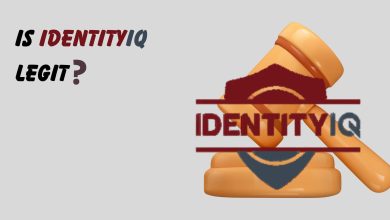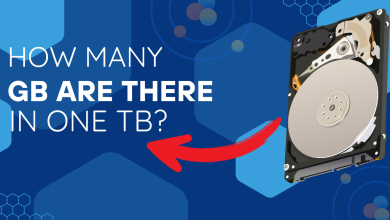What Does Dual Carrier Mean & Is it Better Than Dual SIM?
Cellular mobile networking has come a long way in meeting the growing demand for faster data speeds. As technology continues to improve, the need for better networking and data coverage will persist. Dual carrier technology has played a vital role in pushing the boundaries of data transmission within networking systems, and its impact continues to be felt today.
In this article, we’ll dive deep into the intricacies of dual carrier technologies and how they’re used in modern networking.

Table of Contents:
What is Dual Carrier?
Dual carrier, simply put, is a communication technique that uses two different frequencies or carriers to transmit data to a single device. Since this technology offers substantial improvements over the traditional “one frequency cell carrier,” it is now being used around the world as part of most 3G and 4G network deployments.

Read More: What is VoLTE & How To Use It
How Does Dual Carrier Work?
For a bit of a context, most cell carriers (e.g., AT&T or Verizon) divide their coverage areas into smaller regions, each of which has its own cell site. These sites have multiple towers with MIMO (Multiple Input Multiple Output) antenna systems at transmitters and receivers.

Now, for a dual carrier system, two different radio frequency carriers will be used to transmit data simultaneously. Both of the channels may not have the same frequency, and also don’t carry the same amounts of data. However, at the receiver’s end, the data is combined again.
To ease up the concept, visualize filling up a large empty can of water using one tap. Whatever the speed of flow may be, a second tap from a different source will never slow up the total rate of flow and will fill up the container relatively quickly.
Now, for dual carrier system, this means transmitting data from two different channels, which may translate to faster downloading times, less buffering, and more bandwidth in general.
Pros & Cons of Dual Carrier
The core importance of using a dual carrier system is to transmit data faster essentially. It allows for a higher bandwidth speed, and in some cases, can be used to improve network coverage. Other than that, it can prevent network disconnections since it prevents congestion on a single channel.
Another benefit is how it can be used in areas with a lot of interference. More channels can cancel out the effect of interference on let’s say a single channel. Now, since higher bands of 5G are susceptible to interference too, the concept of multiple channels (even more than two) is being applied there.

As an example, a mobile device can connect to 5G carrier in the mid-band spectrum and the 4G LTE carrier in the low band spectrum simultaneously. This would allow it to achieve high speeds and lower latency in the region where the coverage is adequate, but as soon as your phone gets out, it’ll automatically switch back to LTE.
As for the downsides, well, it’ll only work on supported devices, however the bigger issue is that it requires almost double the radio spectrum. In simple words, if you’re using two channels to transmit something, you’re going to need more space.
Pros:
- Enhanced Speeds: Boosts bandwidth and reduces download times.
- Better Coverage: Expands and strengthens network reach.
- Stable Connections: Minimizes congestion and disconnections.
- Handles Interference: Multiple channels combat interference issues.
- Seamless Transition: Allows devices to toggle between 5G & 4G for uninterrupted service.
Cons:
- Limited Compatibility: Works only with specific devices.
- Spectrum Demand: Requires nearly double the radio bandwidth.
- Costs Rise: Network providers may face higher infrastructure expenses.
- Battery Concerns: Potential for quicker device battery drain.
Dual Carrier vs. Dual SIM
Dual carriers and dual SIMs are two different concepts, often confused because carriers are also associated with mobile network operators.
A dual carrier system allows a device to receive data over two different frequency bands, increasing data transfer speed and improving coverage. A dual SIM phone has the ability to use two SIM cards in the same device.

If your network provider and device support dual carrier, you can take advantage of this technology on both carrier networks.
| Feature/Aspect | Dual Carrier | Dual SIM |
|---|---|---|
| Primary Purpose | Boosts data transmission speeds | Allows two SIM cards to operate in one device |
| Network Enhancement | Uses multiple frequency bands for data transmission | Can switch between or use two different network providers |
| Device Dependency | Requires device compatibility | Requires dual-SIM slots |
| Impact on Data Speed | Potential for faster downloads/browsing | Depends on network providers; no inherent speed boost |
| Geographical Flexibility | Improves coverage in certain areas | Beneficial for traveling or for using two local networks |
| Infrastructure | Network providers need advanced infrastructure | Mostly a hardware feature on the phone |
Dual Carriers in Cellular Networking (3G,4G & 5G)
Since the early 2000s, the concept of dual carriers has been used in 3G, later 4G and now has transitioned to Carrier Aggregation in 5G.
In 3G, it was implemented as DC-HSDPA (Dual Carrier High-Speed Downlink Packet Access) that used two single 5MHz carriers, reaching speeds up to 42Mbps (2x the standard HSDPA). When 4G arrived to the scene, the technology improved and transitioned to DC-HSPA+ (Dual Carrier High-Speed Packet Access Plus).

DC-HSPA+ essentially does the same thing as DC-HSDPA, doubling the bandwidth using the concept of dual carrier systems. However, in lately, the concept of Carrier Aggregation has come into the picture to boost the capacity of a network using not two but three, four or even carriers at once.
How to Check if My Device Supports Dual Carrier Connectivity?
Visit the manufacturer’s website and check the specifications for your device. If you see something like “DC-HSPA+” (DC = Dual Carrier) or “MIMO (Multiple Input Multiple Output)”, your device supports dual carrier.

Check the speed of your connection. This requires some technical knowledge. For example, 4G LTE can reach speeds up to 300Mbps with dual carrier, but only 150Mbps without it. You can check your speeds and compare them to the theoretical peak values listed above.
Keep in mind that the actual speeds you achieve may be lower than the theoretical peak values due to factors such as your data package, interference, and signal strength.
Read More: How to Increase Internet Speed in Windows 10/11?
Conclusion
Dual carrier technology plays in important role in the realm of networking and it’s amazing how it takes two different connections in physical spaces and combines them at the receiving end. This, coupled with carrier aggregation, which uses multiple channels to further increase bandwidth, can open up endless possibilities for faster data transfer speeds in the future.
Dual Carrier - FAQs
They’ll be integrated into Carrier Aggregation, leveraging the same concept of using multiple channels for data transfer.
It was introduced around the early 2000s, gaining prominence with the advent of 4G.
Yes, technologies like Carrier Aggregation are evolving to utilize three, four, or even more carriers simultaneously to further enhance data transfer capacities.
Devices using dual carrier might experience faster battery drain due to simultaneous connections to multiple frequencies.
Absolutely. Combining dual carrier with techniques like MIMO can offer even better data transmission rates and stability.
 Reviewed by
Reviewed by 




